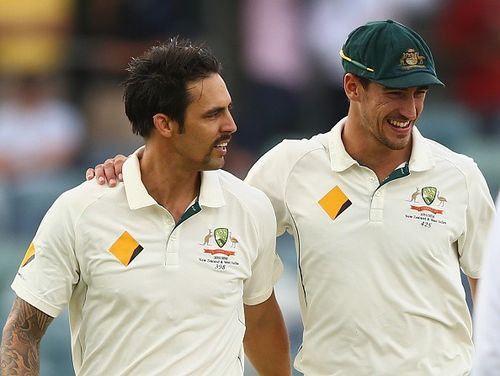
Why do Australia consistently produce the fastest bowlers in the world?

Like a conveyor belt churning out finished products, Australia has been consistently producing fast bowlers for years.
In the early 1900s, Jack Gregory, a part of the huge Gregory family, and Ted McDonald held the fast bowling mantle under Warwick “Big Ship” Armstrong. The years immediately after the 2nd World War produced the exceptional pairing of Keith Miller and Ray Lindwall.
In the 1970s, one of the most ferocious bowling pairs ever, Dennis Lillee and Jeff Thomson, instilled fear in the minds of batsmen. Glenn McGrath, Craig McDermott, Brett Lee and Mitchell Johnson followed in the 1990s and 2000s.
What is it, then, that makes fast bowling such an integral part of the Aussies?
Conducive pitches
Generally speaking, the pitches all over the world can be broadly divided into two types: fast and slow.
A pitch can be regarded as slow if the difference between the release of the ball from the bowler’s hand, and it reaching the batsman is more than 20 kmph. Short pitched deliveries, which might seem a menace on faster pitches, are easy pickings for batsmen on slow pitches.
The difference between the speeds is less, and the bowler gets a lot more bounce. Pitches in Australia, South Africa and England are regarded as fast pitches. The WACA pitch is one of the fastest in the world.
On fast pitches, there is a lot more pace and bounce, and serves as an ideal canvas for a fast bowler to paint his art.
Also, the content of clay in the soil determines the kind of pitch. Australia lies in the southern hemisphere, and the climate isn’t too hot so as to make cracks in the pitches. The surfaces don’t wear much, the moisture stays in the pitch, and the clay helps hold it.
Even in places such as Sydney where the weather is generally hot, the clay content helps retain the moisture.
Depth in fast bowling reserves
The bowling resources never seem to be depleted in Australia. Even with the retirement of Mitchell Johnson and Ryan Harris, there are plenty of bowlers to fill in.
With Mitchell Starc injured, and a back injury troubling Peter Siddle, it might seem a cause of concern for the selectors. But Rodney Marsh, the national selector, believes that they have a “depth chart” which indicates the number of fast bowlers that can play at the international level.
He recently said that the chart shows 20 bowlers that are deemed capable of playing one of the three formats. Nathan Coulter-Nile, Sean Abbott, and Kane Richardson have been given a chance in the last couple of years. Others, such as Jason Behrendorff, Andrew Feteke, Scott Boland, Joe Paris and Bill Stanlake are names which have been doing the rounds.
With Pat Cummins and Starc injured, there are vacant spaces to fill. Such an abundance of bowling reserves means a strong bench strength and healthy competition amongst the candidates.
Training and Stamina
Fast bowling is a physically strenuous act, and requires tremendous stamina and conditioning. The vein-popping and heart-throbbing act has broken down the best of bowlers.
Brett Lee has described in his biography how he used to finish training at 10am, and then ride his pushbike for more than 10 kilometers to visit various construction sites. He used to dig up holes and trenches, and carry equipment for four hours each day. He’d then bike all the way back to his house.
This, he said, was a great way of building the stamina and physique that made him the world class bowler that we know.
Jeff Thomson used to chase pigs as a way of keeping fit. He even used to go hunting, surfing and fishing. All these physical activities were part of his outdoor regimes.
The Australians give utmost importance to fitness and stamina. John Buchanan brought strict military style training in the team culture in 2006, when, during Pre-Ashes training, the entire squad went into commando camp, pushing vans, carrying heavy cans, and hiking through forests.
Plenty of role models to look up to
As mentioned above, Australia has had a number of legendary fast bowlers that are role-models for the next generation. Australia doesn’t have a batsman centric mindset, but gives equal importance to every aspect of the game. For the youngsters taking up the game, they have a number of great bowlers to look up to.
Also, a sound and organized domestic structure has helped in the overall development of upcoming players at every stage of their careers.
There are a number of reasons why the same things don’t apply in India. The pitches are not the same, the diet and physical conditioning is very different for budding cricketers, and there aren’t many role models to look up to. Also, many fast bowlers had to cut on their speeds to prevent injuries and prolong their careers.
The MRF pace academy has been in place since 1987, and has mentored bowlers such as Javagal Srinath, Venkatesh Prasad, Zaheer Khan and Sreesanth. Inspite of a vaunted batting order, a genuine world class bowler is still a top priority in the India team.